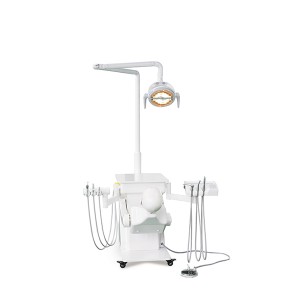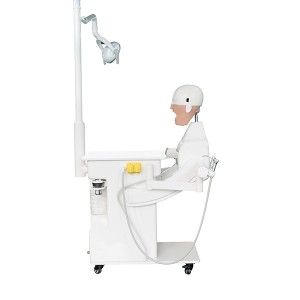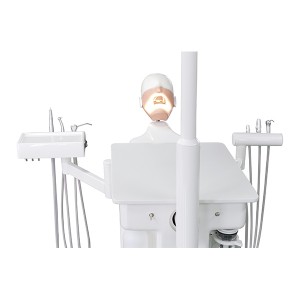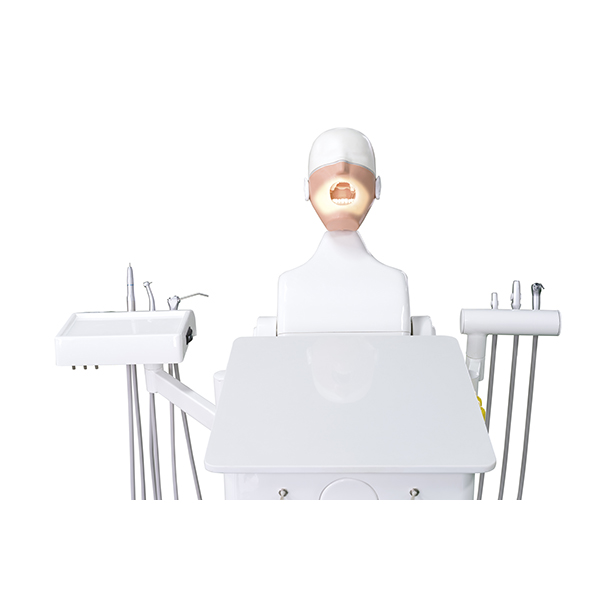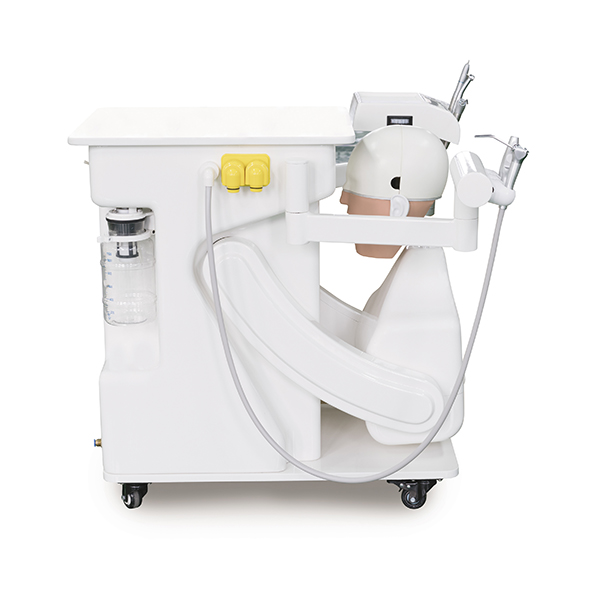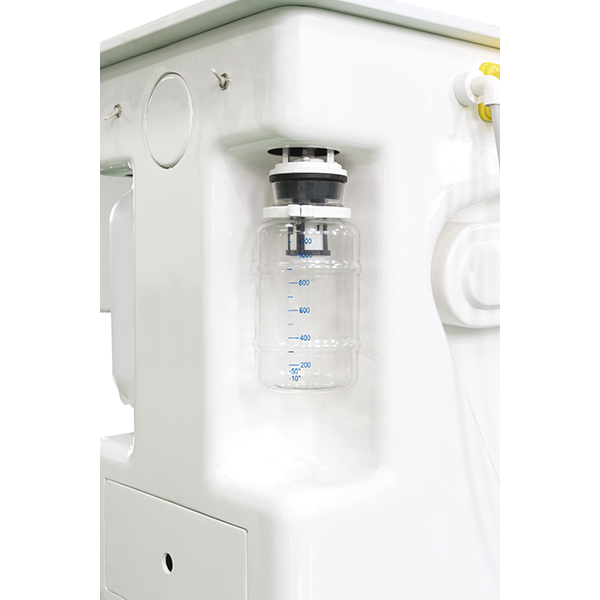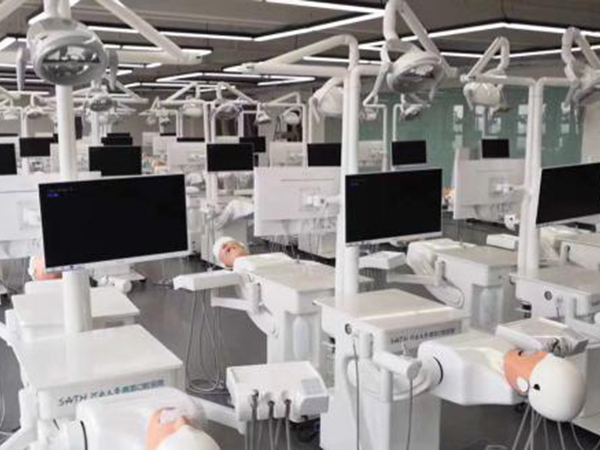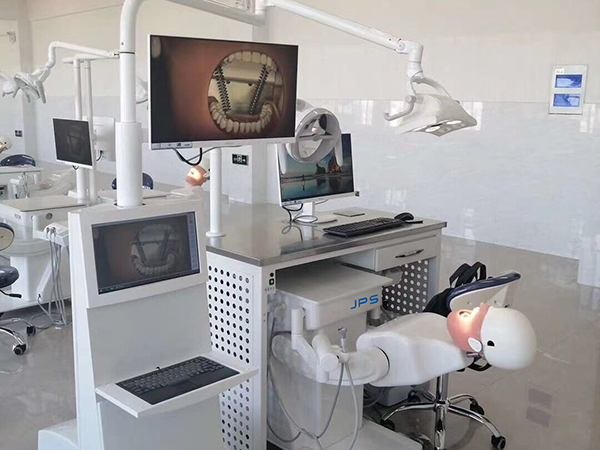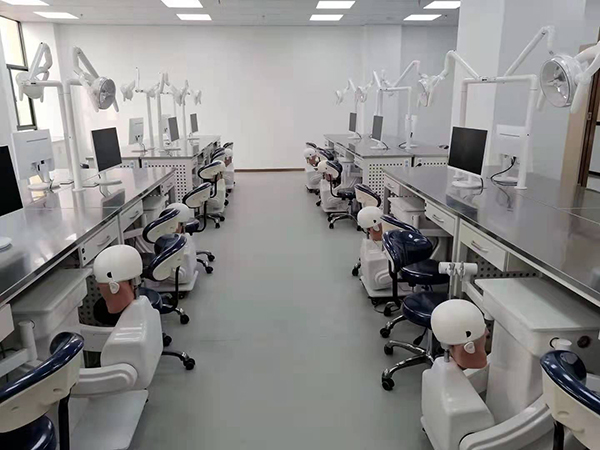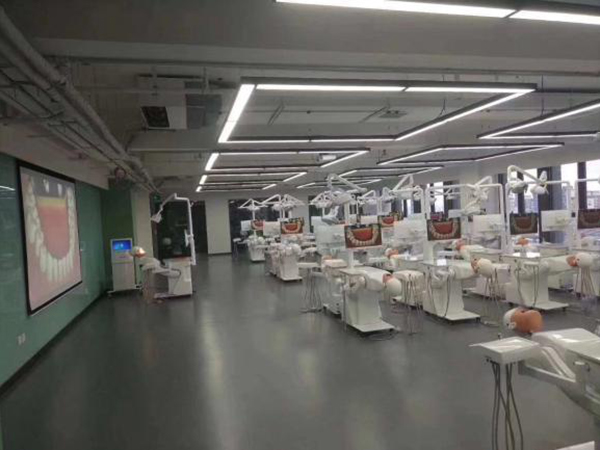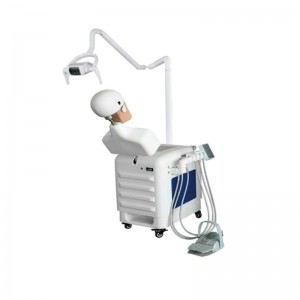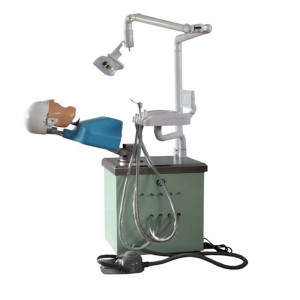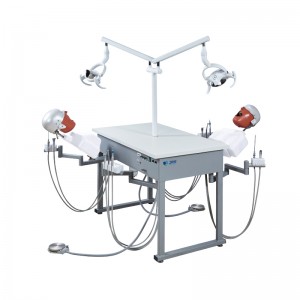High quality Dental Teaching Simulator for dental training practice JPS-FT-III
Designed for the simulation of clinical education
Designed for the simulation of clinical education, help students develop the right operating posture in the pre-clinical study, master ergonomic skills and then smoothly transition to real clinical treatment.
WithJPS FT-III dental teaching simulation system, students learn right from the start, under more realistic conditions:
•In a pre-clinical environment, students learn using standard treatment centre components and do not have to adjust to new equipment later in their education
•Optimum treatment ergonomics with height-adjustable dentist and assistant elements
•Best protection of student health, with integrated, continuous and intensive disinfection of internal water-lines
•New design: dual instrument tray, makes four-hand operation come true .
•Operation light: the brightness is adjustable.
With different type teeth mode
Manikin comes with magnetic articulator , it is compatible with different type teeth model
Imitate real clinical environment.
Electric motors drive the movement of the manikin----imitate real clinical environment.
Easy to clean
Auto reset function of manikin system- provide the cleanliness and utilization of space Artificial marble top is easy to clean
Two preset position keys
Two preset position keys : S1 , S2
Automatic reset key : S0
Can be set highest and lowest position
With emergency stop function
Hommization Suction water bottle
Suction water bottle is designed to be removed and installed very easily ,improve study efficiency a lot.
JPS Dental simulation experts, reliable partners, sincere forever!
Product configuration
| Item | Product name | QTY | Remark |
| 1 | LED light | 1 set |
|
| 2 | Phantom with body | 1 set |
|
| 3 | 3-way syringe | 1 pc |
|
| 4 | 4/2 hole handpiece tube | 2 pcs |
|
| 5 | Salivary ejector | 1 set |
|
| 6 | Foot control | 1 set |
|
| 7 | Clean water system | 1 set |
|
| 8 | Waste water system | 1 set |
|
| 9 | Monitor and monitor bracket | 1 set | Optional |
Working Conditions
1.Ambient temperature: 5°C ~ 40°C
2.Relative humidity: ≤ 80%
3.Pressure of external water source: 0.2~ 0.4Mpa
4.Pressure of external pressure of air source: 0.6~ 0.8Mpa
5.Voltage: 220V + 22V ; 50 + 1HZ
6.Power: 200W
Dental Teaching Simulator
1.Unique design, compact structure, space saving, free movement, easy to put. Product size: 1250(L) *1200(W) *1800(H) (mm)
2.Phantom is electric motor controlled: from -5 to 90 degrees. The highest position is 810mm, and the lowest is 350mm.
3.ONE TOUCH reset function and two preset position function for phantom.
4.Instrument tray and assistant tray are rotatable and foldable.
5.Water purification system with water bottle 600mL.
6.Waste water system with 1,100mL waste water bottle and magnetic drainage bottle is convenient for quick dismount.
7.Both high and low speed handpiece tubes are designed for 4 hole or 2hole handpiece.
8.Marble table top is solid and easy to clean. Table size is 530( L )* 480 (W) (mm)
9.Four self-locking function caster wheels at the bottom of the box are smooth to move and keep stable.
10.Independent clean water and waste water system is easy to use. No need for extra piping installation which reduces cost.
11.External air source quick connector is convenient to use.
Monitors and microscopes and workstations are optional
Dental simulator with monitor and workstation
What is a Dental Simulator?
A Dental Simulator is an advanced training device used in dental education and professional development to replicate real-life dental procedures in a controlled, educational setting. These simulators provide dental students and professionals with a realistic and hands-on experience, allowing them to practice various dental techniques and procedures before working on actual patients.
Intended Uses of a Dental Simulator
Educational Training:
Used extensively in dental schools to train students in a safe and controlled environment before they perform procedures on real patients.
Skill Enhancement:
Allows practicing dentists to refine their skills, learn new techniques, and stay updated with the latest advancements in dental procedures.
Assessment and Evaluation:
Used by educators to assess the competence and progress of dental students and professionals, ensuring they meet the required standards.
Pre-Clinical Practice:
Provides a bridge between theoretical learning and clinical practice, helping students gain confidence and proficiency in their skills.
Benefits:
Realistic Experience:
Provides a highly realistic simulation of dental procedures, enhancing the learning experience and preparing users for real-life scenarios.
Immediate Feedback and Assessment:
Offers real-time feedback and detailed assessments, helping users improve their skills quickly and efficiently.
Safe Learning Environment:
Allows users to practice and make mistakes without any harm to real patients, providing a safe and controlled environment for learning.
Skill Development:
Helps users develop precise hand movements, improve their technique, and build confidence in performing dental procedures.
Versatile Training:
Suitable for a wide range of dental procedures and can be used by both students and experienced professionals for training and skill enhancement.
Applications:
Dental Schools:
Used extensively in dental education to train students in a safe and controlled environment before they work on real patients.
Professional Development:
Employed in continuing education courses for practicing dentists to refine their skills and learn new techniques.
Certification and Competency Testing:
Used by educational institutions and certification bodies to assess and ensure the competence of dental practitioners.
How does a Dental simulator work?
Key Components:
Manikins (Phantom Heads):
Anatomically accurate models of the human oral cavity, including teeth, gums, and jaws. These manikins provide a realistic setting for practicing dental procedures.
Workstations:
Equipped with dental chairs, lights, and essential dental instruments and handpieces such as drills, scalers, and mirrors, replicating a real dental operatory.
Haptic Feedback Technology:
Provides tactile sensations that mimic the feel of working on real dental tissues, allowing users to experience the resistance and textures they would encounter in actual dental procedures.
Interactive Software:
Guides users through various dental procedures with visual instructions, real-time feedback, and performance assessments. The software typically includes different scenarios and difficulty levels to match the user’s skill level.
Digital Displays:
Monitors or screens that show instructional videos, real-time data, and visual feedback during practice sessions.
How It Works:
Setup:
The instructor or user sets up the simulator by selecting the desired procedure and preparing the manikin with the appropriate dental models or teeth for that procedure.
Procedure Selection:
Users select the dental procedure they need to practice from the software interface. The available procedures can include cavity preparation, crown placement, root canal treatment, and more.
Guided Practice:
Users perform the selected procedure on the manikin using the provided dental instruments. The interactive software offers step-by-step guidance, including visual and audio instructions.
Haptic Feedback:
During the procedure, haptic feedback provides realistic tactile sensations, allowing users to feel the difference between various dental tissues and experience the resistance encountered when drilling or cutting.
Real-time Feedback:
The software provides immediate feedback on the user’s performance, highlighting areas of improvement. This feedback can include metrics such as precision, technique, and completion time.
Assessment and Evaluation:
After completing the procedure, the software evaluates the user’s performance based on predefined criteria. This assessment helps users understand their strengths and areas needing improvement.
Repeat and Mastery:
Users can repeat procedures as needed to practice and refine their skills. The ability to practice repeatedly in a risk-free environment is a significant advantage.
What is haptic simulation dentistry?
Haptic simulation dentistry refers to the use of advanced technology that provides tactile feedback to simulate the feel and resistance of real dental tissues during dental procedures. This technology is integrated into dental simulators to enhance the training and educational experience for dental students and professionals. Here's a detailed explanation:
Key Components of Haptic Simulation Dentistry:
Haptic Feedback Technology:
Haptic devices are equipped with sensors and actuators that mimic the physical sensations of working with dental tools on real teeth and gums. This includes sensations such as resistance, texture, and pressure changes.
Realistic Dental Models:
These simulators often include anatomically accurate models of the oral cavity, including teeth, gums, and jaws, to create a realistic training environment.
Interactive Software:
The haptic dental simulator is usually connected to software that provides a virtual environment for various dental procedures. The software offers real-time feedback and assessment, guiding users through different tasks.
Benefits of Haptic Simulation Dentistry:
Enhanced Learning Experience:
Haptic feedback allows students to feel the difference between various dental tissues, helping them understand the tactile aspects of procedures such as drilling, filling, and extraction.
Improved Skill Development:
Practicing with haptic simulators helps students and professionals develop precise hand movements and control, crucial for successful dental work.
Safe Practice Environment:
These simulators provide a risk-free environment where learners can make mistakes and learn from them without any harm to patients.
Immediate Feedback and Assessment:
The integrated software offers instant feedback on performance, highlighting areas of improvement and ensuring that users are practicing correctly.
Repetition and Mastery:
Users can practice procedures repeatedly until they achieve proficiency, which is often not possible with real patients due to ethical and practical constraints.
Applications of Haptic Simulation Dentistry:
Dental Education:
Widely used in dental schools to train students on various procedures before they work on real patients. It helps bridge the gap between theoretical knowledge and practical skills.
Professional Development:
Allows practicing dentists to refine their skills, learn new techniques, and stay updated with the latest advancements in dental procedures.
Certification and Competency Testing:
Used by educational institutions and certification bodies to assess and ensure the competence of dental practitioners.
Research and Development:
Facilitates the testing of new dental tools and techniques in a controlled environment before they are introduced into clinical practice.
In summary, haptic simulation dentistry is a cutting-edge approach that significantly enhances dental training by providing realistic, tactile feedback, thus improving the overall skill and confidence of dental practitioners.



